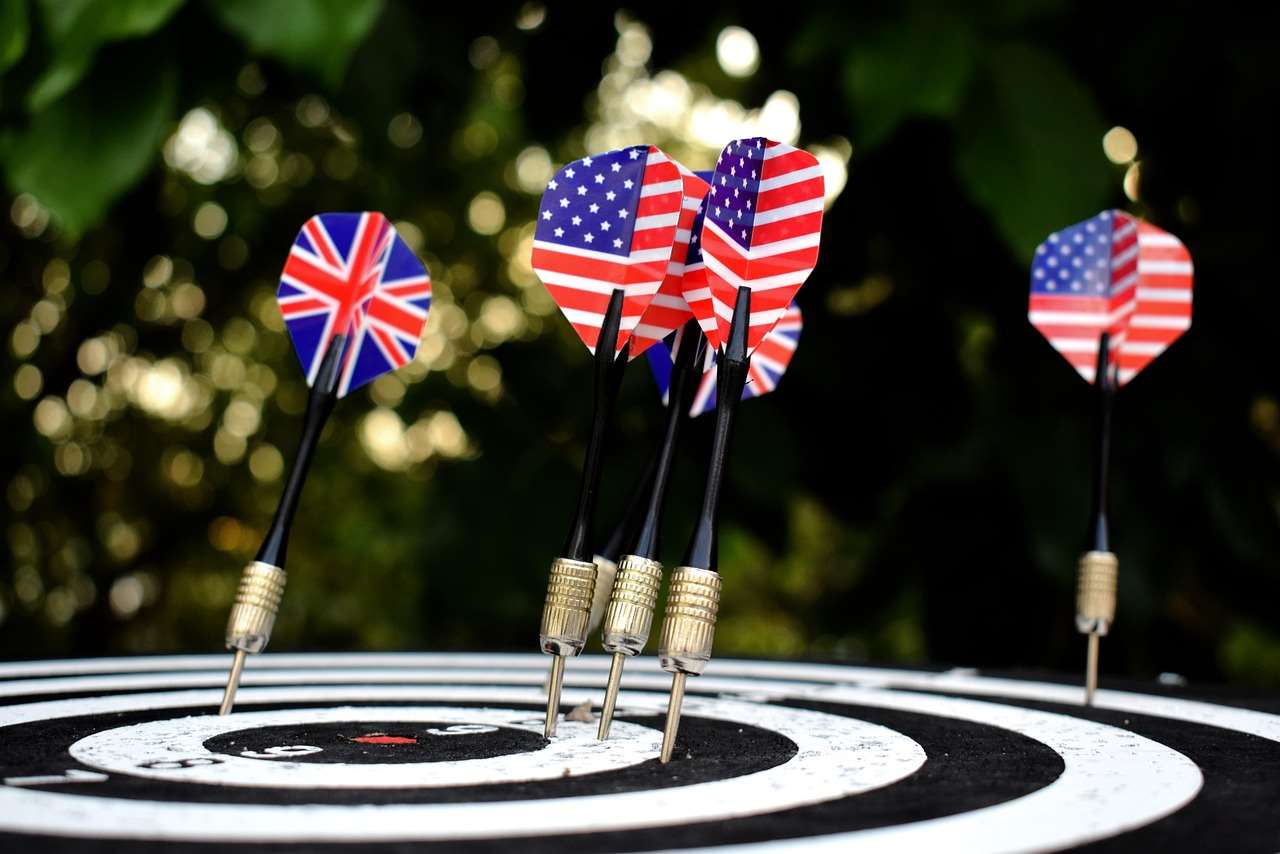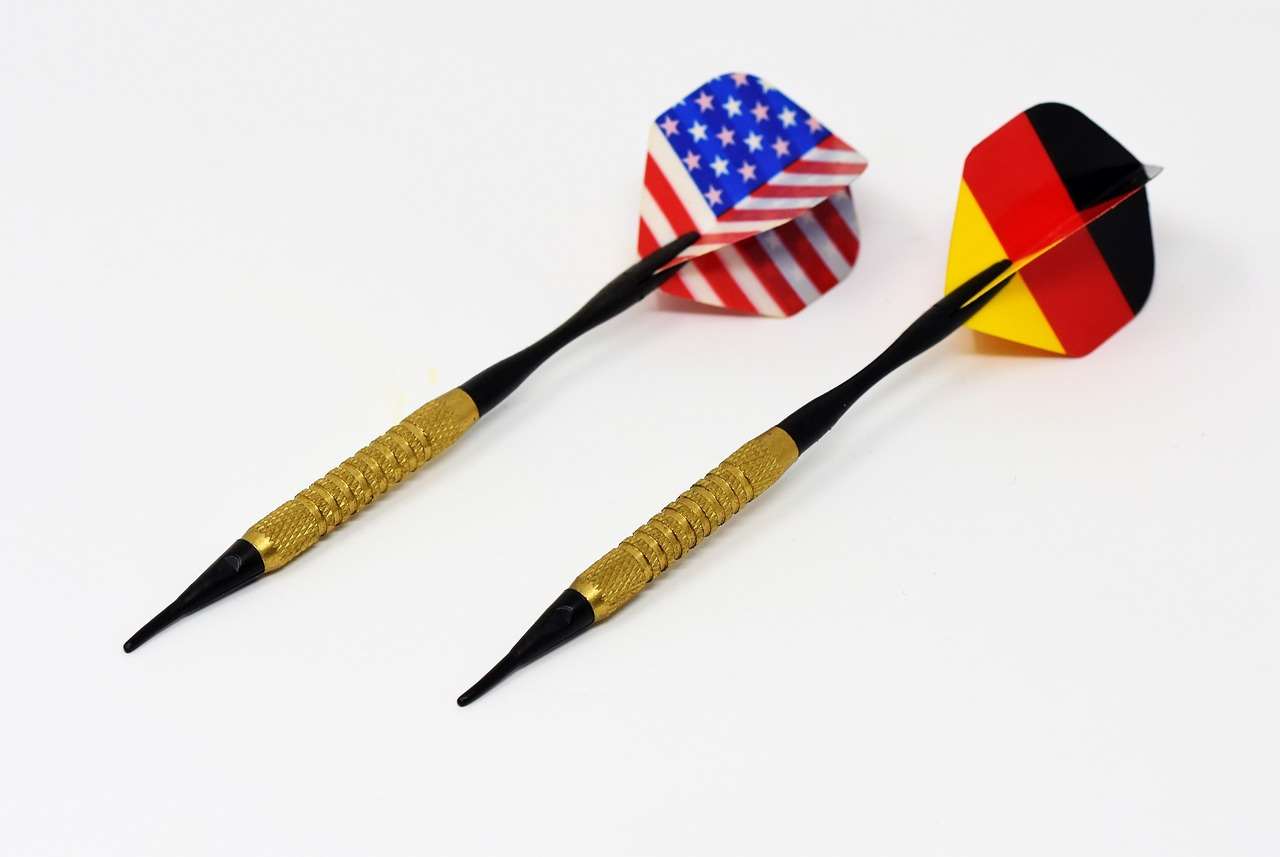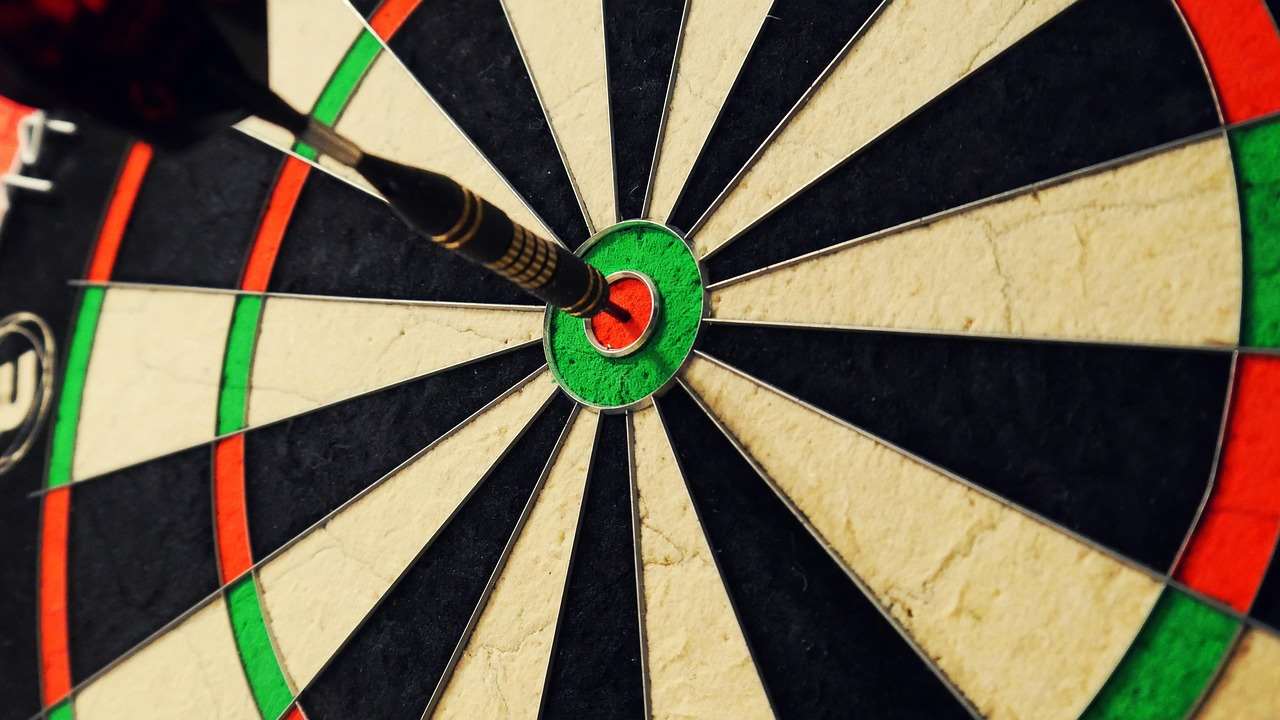The 170 darts finish, often called “the Big Fish,” is the highest possible checkout in a single turn in darts, requiring a perfect treble 20, treble 20, and bullseye. This article will explore the intricacies of achieving this impressive feat, covering the probabilities, strategies, and historical significance surrounding it. We’ll also delve into related checkout combinations and offer tips to improve your own game.
⚠️ Still Using Pen & Paper (or a Chalkboard)?! ⚠️
Step into the future! The Dart Counter App handles all the scoring, suggests checkouts, and tracks your stats automatically. It's easier than you think!
Try the Smart Dart Counter App FREE!Ready for an upgrade? Click above!
Decoding the 170 Darts Finish
The allure of the 170 darts finish lies in its simplicity and its difficulty. It’s the equivalent of a hole-in-one in golf or a grand slam in baseball – a moment of darting perfection. But what makes it so challenging? The answer lies in the precision required for each dart. Missing just one dart significantly alters the remaining checkout options, often leading to more complex and pressure-filled throws.

To successfully achieve the 170 darts finish, you need to hit:
- Treble 20 (T20): Scoring 60 points.
- Treble 20 (T20): Scoring another 60 points.
- Bullseye (50): Completing the 170 points.
While mathematically straightforward, hitting these targets consistently under pressure is what separates recreational players from professionals. Many players practice the treble 20 relentlessly, but the bullseye can be the deciding factor in successfully completing this coveted checkout.
The Probability and Psychology of a Perfect Checkout
Let’s face it: hitting a 170 darts finish is rare. While there are no definitive statistics tracking the frequency of this checkout specifically, it’s safe to say that it occurs far less often than other common checkouts like 40 (double 20) or 32 (double 16). The pressure associated with being on a 170 checkout can significantly impact a player’s performance.
The psychological element plays a huge role. Knowing you’re one throw away from a potential ‘Big Fish’ can either elevate your game or cause you to crumble. Experienced players often develop routines and mental strategies to manage this pressure, focusing on their technique and visualizing the successful throws.
Alternative High Checkouts: Preparing for All Possibilities
While aiming for the 170 darts finish is admirable, it’s crucial to be prepared for misses and have backup plans. Here are some common high checkout strategies:
- 167: T20, T19, Bullseye
- 164: T20, T18, Bullseye
- 161: T20, T17, Bullseye
- 160: T20, T20, Double 20 (also known as a ‘ton 40’)
Understanding these alternative checkouts allows you to adapt your strategy if your first dart misses the intended target. For example, if you miss the first T20 and hit a single 20, you can adjust your subsequent throws to aim for a different checkout combination.

Tips to Improve Your Checkout Game
Want to increase your chances of hitting that elusive 170 darts finish or other high checkouts? Here are some actionable tips:
- Practice, Practice, Practice: Dedicate time to specifically practicing high checkouts. Focus on your throwing technique and mental preparation.
- Analyze Your Game: Use an Electronic dart score counter to track your progress and identify areas for improvement. Are you consistently missing the treble 20? Are you struggling with the bullseye under pressure?
- Develop a Routine: Create a pre-throw routine to help you focus and maintain consistency. This might involve taking a deep breath, visualizing the target, and following a specific throwing motion.
- Manage Pressure: Learn to manage the pressure of being on a high checkout. Focus on your technique and avoid dwelling on the potential outcome.
- Know Your Outs: Memorize common checkout combinations. The more options you have, the better you’ll be able to adapt to different scenarios.
- Consider dart barrel grip styles. Choosing the proper grip will help with consistency and precision.
Another related keyword to keep in mind is dart board setup; if your board isn’t properly positioned according to darts afstand tot bord, hitting consistent checkouts will be even more challenging.
The 170 Darts Finish in Professional Darts
The 170 darts finish holds a special place in the hearts of darts fans. When a professional player hits a ‘Big Fish’, the crowd erupts in cheers, recognizing the skill and precision required to achieve it. Many legendary moments in darts history involve a crucial 170 checkout.
The pressure on professional players to hit these high checkouts is immense. They are often competing for large sums of money and the chance to win prestigious tournaments. Successfully navigating this pressure is a key factor in their success.
Keep an eye on events like the Premier League Darts to witness these incredible feats of skill. Many fans wonder are premier darts legit, and the incredible moments, including potential 170 darts finishes, help demonstrate the athletes’ skill and dedication.
Beyond the 170: Mastering Other Critical Checkouts
While the 170 darts finish is the highest possible checkout, mastering other key numbers is equally important for consistent success. Certain checkouts appear more frequently than others, and proficiency with these can significantly improve your overall game.
- 40 (Double 20): One of the most common checkouts.
- 32 (Double 16): Another frequently occurring checkout.
- 81: A tricky checkout often requiring a treble and a double.
- 85: Another challenging checkout which many players setup for double 20.
Understanding and practicing these checkouts will make you a more well-rounded and competitive darts player. Consider experimenting to discover where to buy cheap darts to properly train yourself.

Equipment Considerations: Choosing the Right Darts
Your equipment can also influence your ability to hit the 170 darts finish and other checkouts. Choosing the right darts for your throwing style and grip is essential.
Consider these factors when selecting darts:
- Weight: Experiment with different weights to find what feels most comfortable and provides the best control.
- Grip: Choose a grip that suits your throwing style. Some darts have knurled grips for enhanced control, while others have smoother surfaces.
- Flights: Different flight shapes and sizes can affect the dart’s trajectory. Experiment to find what works best for you.
- Shafts: The length and material of the shaft can also influence the dart’s flight characteristics.
Finding the right darts is a personal preference. Visit a local darts shop or try different sets to see what feels best in your hand.
The Future of the 170 Darts Finish
The 170 darts finish will undoubtedly remain a symbol of excellence in the world of darts. As the sport continues to evolve and attract new talent, we can expect to see even more incredible feats of skill and precision, including more ‘Big Fish’ checkouts.

Whether you’re a seasoned professional or a casual player, the pursuit of the perfect 170 darts finish is a rewarding challenge. Keep practicing, refine your technique, and never give up on your dream of hitting that elusive ‘Big Fish’!
Conclusion: Aiming for Perfection
The 170 darts finish is the pinnacle of achievement in darts, representing the perfect blend of skill, precision, and mental fortitude. While hitting it consistently is a challenge, understanding the mechanics, probabilities, and psychological factors involved can significantly improve your chances. Remember to practice diligently, develop a solid strategy, and never lose sight of the thrill of the game. So grab your darts, step up to the oche, and start aiming for that ‘Big Fish’! Continue to improve your dart game and consider king darts player to learn new tricks.
Hi, I’m Dieter, and I created Dartcounter (Dartcounterapp.com). My motivation wasn’t being a darts expert – quite the opposite! When I first started playing, I loved the game but found keeping accurate scores and tracking stats difficult and distracting.
I figured I couldn’t be the only one struggling with this. So, I decided to build a solution: an easy-to-use application that everyone, no matter their experience level, could use to manage scoring effortlessly.
My goal for Dartcounter was simple: let the app handle the numbers – the scoring, the averages, the stats, even checkout suggestions – so players could focus purely on their throw and enjoying the game. It began as a way to solve my own beginner’s problem, and I’m thrilled it has grown into a helpful tool for the wider darts community.